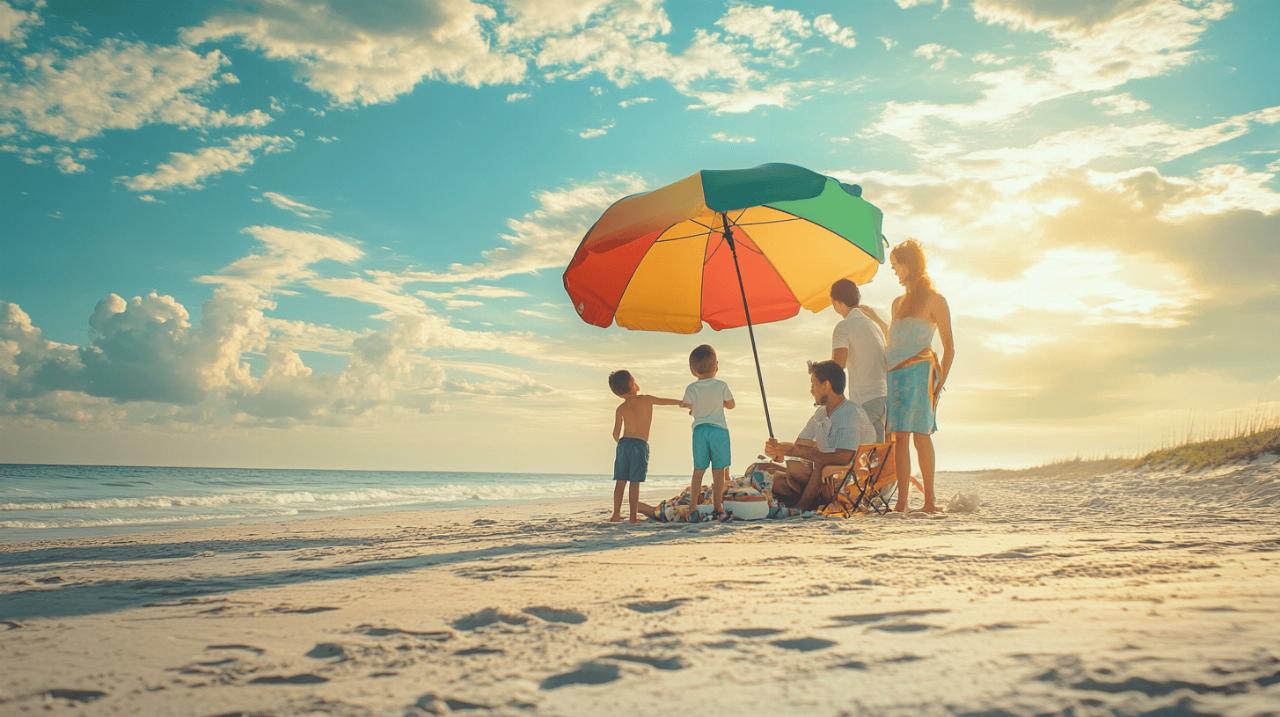Flipping through old photo albums often conjures up a sense of nostalgia, a tangible connection to moments that might otherwise fade into the recesses of memory. Yet in the digital age, countless holiday snaps languish on hard drives, never to be printed or cherished. The challenge lies not just in capturing images, but in creating photographs that transcend the generic postcard aesthetic and truly reflect the unique character of your travels. By shifting focus from the iconic landmarks that dominate every tourist's itinerary to the nuanced details and authentic experiences that define a destination, you can transform your holiday photos into a compelling visual narrative worthy of any scrapbook.
Mastering light: the secret to captivating holiday photographs
Understanding the interplay of light can elevate an ordinary snapshot into something genuinely evocative. Whilst many travellers instinctively reach for their cameras during the harsh midday sun, this often results in overexposed skies and unflattering shadows. The secret to creating images with depth and warmth lies in timing your photography to coincide with periods when natural light is at its most forgiving. Rather than settling for the flat illumination of noon, consider how the quality of light changes throughout the day and how it can transform your subject matter entirely. This awareness allows you to capture scenes that feel alive and dynamic, rather than static and two-dimensional.
Golden Hour Magic: When to Shoot for Stunning Results
The golden hour refers to the period shortly after sunrise and just before sunset, when the sun sits low on the horizon and bathes everything in a soft, amber glow. This natural phenomenon creates long shadows and a warmth that adds emotion and texture to your travel photography. Waking early or lingering into the evening might require a bit of extra effort, but the results are consistently rewarding. Landscapes that appear unremarkable under the glare of midday sun suddenly take on a painterly quality, with colours intensified and contours softened. Even bustling city streets acquire a sense of tranquillity during these fleeting moments, offering photographers a chance to capture a destination in a more intimate light. By planning your photo sessions around these brief windows, you can ensure that your holiday photos possess a visual richness that immediately sets them apart from the standard fare.
Blue hour brilliance: creating atmospheric travel images
Equally compelling but often overlooked is the blue hour, the short period just before sunrise and after sunset when the sky takes on deep, saturated hues of blue and purple. This time of day offers a cooler, more atmospheric quality that can lend a sense of mystery and calm to your images. Urban landscapes are particularly striking during the blue hour, as street lamps and illuminated buildings provide warm points of light against the cool backdrop of the sky. The contrast between artificial and natural light creates a balanced exposure that is difficult to achieve at any other time. For those interested in adding variety to their travel scrapbook, the blue hour provides an opportunity to capture the same location in a completely different mood, offering a more complete picture of the place you visited.
Perspective matters: fresh approaches to travel photography
Once you have mastered the technical aspects of lighting, the next step is to rethink your composition and perspective. It is all too easy to fall into the habit of photographing a landmark from the same vantage point as every other visitor, resulting in images that feel formulaic and uninspired. Breaking free from this pattern requires a willingness to experiment with different angles and focal lengths. Instead of always standing at eye level and shooting straight ahead, consider crouching low to the ground or finding an elevated position that offers a fresh view. This simple shift in perspective can reveal unexpected details and create a sense of originality that makes your holiday photos genuinely memorable.
Discovering details: close-up shots that tell stories
Whilst sweeping vistas have their place, it is often the smaller, more intimate details that convey the true essence of a destination. A weathered door handle, the intricate pattern of tiles on a historic building, or the vibrant colours of spices at a local market can all serve as powerful visual storytelling elements. These close-up shots invite viewers to look beyond the obvious and engage with the textures and nuances that define a place. They also add variety to your photo albums, breaking up the monotony of wide-angle shots and providing context that enhances the overall narrative of your journey. By training your eye to notice these details, you can create a richer, more layered collection of travel memories that goes beyond the superficial.
Changing your viewpoint: unique angles for familiar scenes
Even the most photographed landmarks can be reimagined through creative composition. Rather than settling for the standard frontal view, experiment with shooting from unusual angles or incorporating foreground elements that add depth and interest. A low angle can make a structure appear more imposing and dramatic, whilst a high vantage point can reveal patterns and symmetries that are invisible from ground level. Framing your subject through archways, windows, or natural features can also add layers to your composition, drawing the viewer's eye into the image and creating a more immersive experience. This approach not only sets your photography apart but also demonstrates a thoughtful engagement with your surroundings, transforming a tourist snapshot into a considered piece of visual storytelling.
Authentic Moments: Capturing the Soul of Your Destination
 Travel is as much about the people and culture of a place as it is about the scenery, yet human subjects are often absent from holiday photos. Including portraits and candid shots of locals going about their daily lives can add a powerful emotional dimension to your travel scrapbook. These images capture the personality and spirit of a destination in a way that landscapes alone cannot, offering a glimpse into the lives and stories of the people who call it home. However, photographing people whilst travelling requires sensitivity and respect, and it is important to approach this aspect of travel photography with care and consideration.
Travel is as much about the people and culture of a place as it is about the scenery, yet human subjects are often absent from holiday photos. Including portraits and candid shots of locals going about their daily lives can add a powerful emotional dimension to your travel scrapbook. These images capture the personality and spirit of a destination in a way that landscapes alone cannot, offering a glimpse into the lives and stories of the people who call it home. However, photographing people whilst travelling requires sensitivity and respect, and it is important to approach this aspect of travel photography with care and consideration.
Photographing local life: respectful portraiture whilst travelling
Before raising your camera to photograph a stranger, always seek permission, either verbally or through gestures if language is a barrier. This simple act of courtesy not only respects the dignity of your subject but often results in more natural and engaging portraits. Many people are happy to be photographed once they understand your intentions, and a brief conversation can lead to spontaneous moments of connection that enrich your travel experience. Candid shots taken with permission, capturing artisans at work or vendors at a bustling market, can convey authenticity and warmth that staged poses rarely achieve. These images become not just photographs but records of genuine human interaction, adding depth and meaning to your collection of travel memories.
Everyday Adventures: Finding Beauty in the Ordinary
Whilst iconic landmarks undoubtedly have their appeal, some of the most memorable travel photos capture the everyday moments that define a place. The ritual of morning coffee at a local café, the chaos of a crowded bus, or the quiet beauty of a neighbourhood park can all serve as powerful subjects for photography. These scenes offer a more honest and complete representation of your travels, documenting not just where you went but how it felt to be there. By focusing on the ordinary alongside the extraordinary, you create a balanced narrative that reflects the full spectrum of your journey. This approach also encourages you to slow down and engage more deeply with your surroundings, leading to a more immersive and rewarding travel experience.
Crafting your visual narrative: building a cohesive travel album
Creating a memorable scrapbook is about more than just compiling a random assortment of images. It requires thoughtful curation and a clear sense of the story you want to tell. By approaching your travel photography with intention and structure, you can transform a collection of disparate snapshots into a cohesive visual narrative that captures the essence of your journey. This process begins even before you return home, as you consider how each photograph fits into the broader story of your trip and what elements will help to convey that story most effectively.
Developing your photographic theme: what's your travel story?
Every trip has its own character, whether it is the relaxed pace of a beach holiday, the cultural immersion of exploring historic cities, or the adventure of a road trip through unfamiliar landscapes. Identifying the central theme of your journey can help you focus your photography and create a more unified collection of images. This might mean emphasising the vibrant colours of local markets, the architectural details of historic buildings, or the natural beauty of coastal scenery. By maintaining a consistent theme throughout your travel scrapbook, you create a sense of coherence that makes the album more engaging and easier to navigate. This thematic approach also encourages you to think more critically about what you photograph, ensuring that each image contributes meaningfully to the overall narrative.
Beyond Landmarks: Creating a Complete Picture of Your Journey
Whilst it is natural to want photographic evidence of the famous sights you visited, a truly memorable travel album should encompass more than just landmarks. Including images of everyday life, local cuisine, and the small moments that made your trip unique provides a fuller and more honest account of your travels. Ticket stubs, maps, and other memorabilia can also be incorporated into your scrapbook, adding texture and context that enhance the visual storytelling. Journal entries describing your experiences and reflections can complement the photographs, offering insights that images alone cannot convey. By combining these various elements, you create a rich tapestry of travel memories that goes beyond the superficial and captures the true spirit of your adventure.
